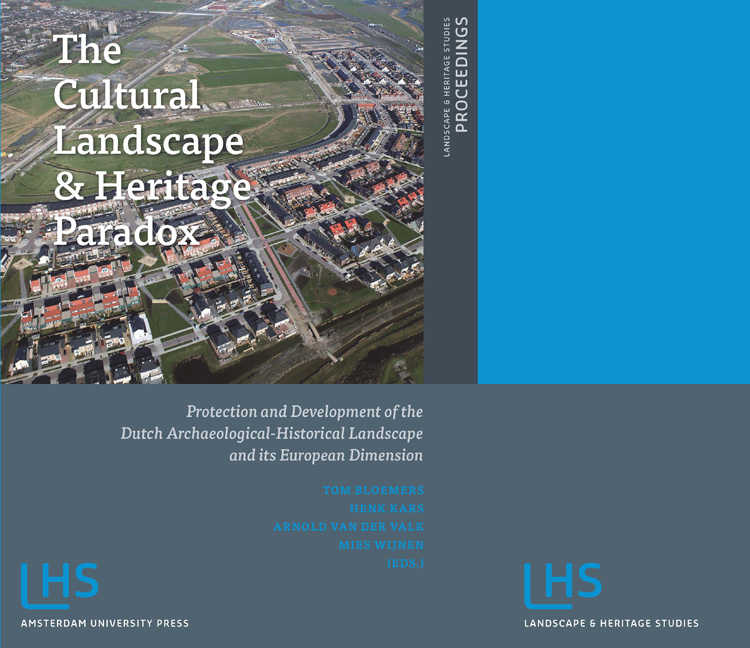 The Cultural Landscape and Heritage Paradox
The Cultural Landscape and Heritage Paradox Book contents
- Frontmatter
- Contents
- Preface
- I INTRODUCTION
- II INSIGHTS AND PROSPECTS OF ARCHAEOLOGICAL-HISTORICAL LANDSCAPE STUDIES
- III LINKING KNOWLEDGE AND ACTION
- IV IMAGINATION - FACTS AND CONSTRUCTIONS
- V SHARING KNOWLEDGE - STORIES, MAPS AND DESIGN
- VI SYNTHESIS AND CONCLUSIONS
- VII MANAGEMENT OF KNOWLEDGE
- VIII AGENDA FOR THE FUTURE
- IX SUMMARY
- X APPENDIX
- Subject Index
- Index of Places and Regions
6 - Assessing in situ Preservation of Archaeological Wetland sites by Chemical Analysis of Botanical Remains and Micromorphology
Published online by Cambridge University Press: 21 January 2021
- Frontmatter
- Contents
- Preface
- I INTRODUCTION
- II INSIGHTS AND PROSPECTS OF ARCHAEOLOGICAL-HISTORICAL LANDSCAPE STUDIES
- III LINKING KNOWLEDGE AND ACTION
- IV IMAGINATION - FACTS AND CONSTRUCTIONS
- V SHARING KNOWLEDGE - STORIES, MAPS AND DESIGN
- VI SYNTHESIS AND CONCLUSIONS
- VII MANAGEMENT OF KNOWLEDGE
- VIII AGENDA FOR THE FUTURE
- IX SUMMARY
- X APPENDIX
- Subject Index
- Index of Places and Regions
Summary
ABSTRACT
Archaeological botanical remains are prone to deterioration in many burial environments and play an important role in assessing the preservation state of scheduled sites. Two projects that deal with these remains are presented here. The first is an experimental study on the degradation patterns of macroremains using instrumental analytical techniques. After the visual inspection of samples of more than 60 species the chemical profiles were determined using pyrolysis-gas chromatography/mass spectrometry and thermochemolysis. Only a few species have characteristic chromatograms, therefore recognizing plant species based only on their chromatograms is not a viable method. Degradation estimated by visual inspection so far has not shown a correlation with chemical degradation.
The second project encompasses two case studies applying micromorphology to study the preservation potential of archaeological soils. The first deals with a Neolithic wooden trackway in a peat extraction area. Since the 1980s, the water table was often far below large parts of the trackway and test pits from 2004 showed that the wood was heavily degraded by erosion bacteria but not by fungi. Micromorphological research showed that peat layers above the trackway are occasionally heavily degraded by microbes and soil fauna but that most of the peat is well preserved. It was concluded that the trackway was not in direct danger, thanks to the strong water retaining capacity of peat. The second case study concentrated on a series of Early Neolithic sites found on clayey fluvial levees with thick layers of organic-rich material. The sites have a complex post-depositional history, they were flooded in a freshwater environment and peat was formed. This was followed by flooding by the sea, turning the area into a brackish and then to a saline inland sea. After reclaiming in the 1960s, the sites are at shallow depths in a heavily drained agricultural area. In 2004, a site assessment was carried out. Wood samples showed strong decay by erosion bacteria but no traces of fungi. Redox probes, soil chemical analyses and micromorphological research showed that (sub)oxic conditions reached the top of the archaeological layer, while the deeper parts were still reduced. Organic matter appeared to be unaffected and had well-preserved cell structures.
- Type
- Chapter
- Information
- The Cultural Landscape and Heritage ParadoxProtection and Development of the Dutch Archaeological-Historical Landscape and its European Dimension, pp. 161 - 176Publisher: Amsterdam University PressPrint publication year: 2010
- 1
- Cited by


